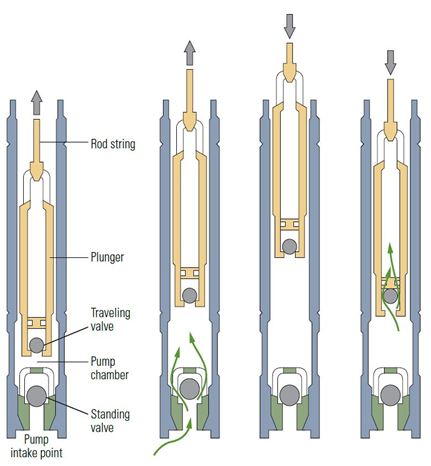How a rod pump works

The number 1 online oil and gas marketplace
The familiar pumpjack can be found around the world in oilfields from Texas to Beverly Hills to France. Why are pumpjacks so popular? Why are pumpjacks the go-to technology for the oil and gas industry? In short, pumpjacks (and rod pumps) are an efficient, simple, and reliable means of pumping fluid from the subsurface.

It is essentially just two check valves
When the horses head of the pumpjack moves upwards, the connected sucker rods move upward, and the plunger and travelling valve do as well. The ball of the traveling valve is then sealed and moves fluid up the tubing (and out of the well). At the same time, the pressure in the pump barrel drops, opening the ball of standing valve and allowing fluid to enter the barrel.
"Gas is best left out of a rod pump"
It is critical that a rod pump is able to create a pressure seal between the ball and seat of the standing and travelling valves and between the plunger and barrel of the pump. In the event a well produces even a small amount of sand, this can cause erosion of the sealing surfaces, reducing pump efficiency. To help prevent this, there are numerous metallurgical options for the valve ball and seats ass well as material alternatives and tolerances for rings of the plunger all designed to better handle sand particles.






